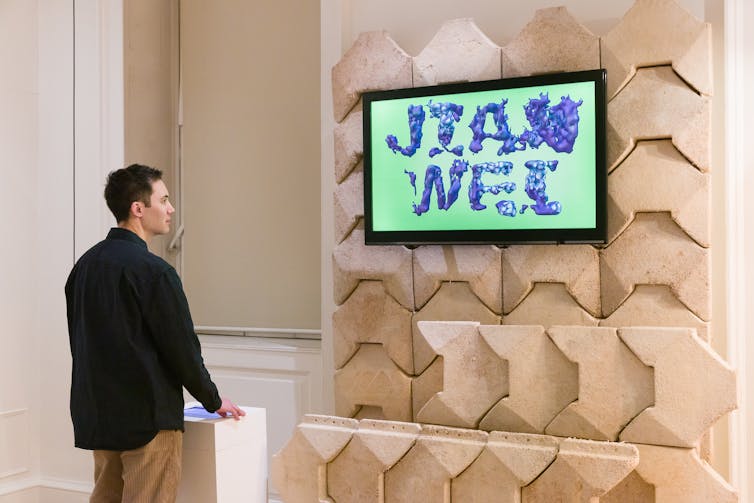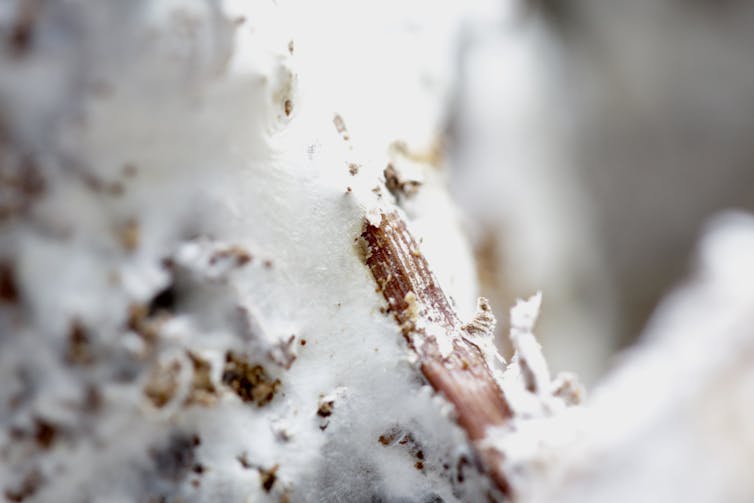The world of fungi has attracted a lot of interest and seems to be becoming very fashionable of late.
A new exhibition at Somerset House in London, for example, is dedicated to “the remarkable mushroom”. No surprise: we’re being promised that mushrooms may be the key to a sustainable future in fields as diverse as fashion, toxic spill clean ups, mental health and construction. It’s in this last field that my own interests lie.
Climate change is the fundamental design problem of our time: buildings are hugely complicit in the crisis. Together, buildings and construction contribute 39 per cent of the world’s carbon footprint. Energy used to heat, cool and light buildings accounts for 28 per cent of these emissions: households are the biggest emitter of greenhouse gases since 2015, accounting for a quarter of total UK greenhouse gas emissions in 2017.
The remaining 11 per cent of buildings’ carbon emissions consists of those associated with construction and building materials. The UK construction industry, for example, uses around 400 million tonnes of materials each year and approximately 100 million tonnes become waste.
Cement alone is responsible for a whopping 8 per cent of global CO₂ emissions. Compare this to the much maligned global aviation industry, which emits 2 per cent of all human-induced CO₂ emissions. Buildings and, by association, the construction industry, are profoundly responsible for climate change.

There is evidently a real need for the construction industry to reduce the impact of its material and energy use and to take part in the transition towards a more sustainable economy by researching and using alternative materials. This is not an absurd ask: such materials already exist.
“
Cement alone is responsible for a whopping 8 per cent of global CO₂ emissions.
Mushroom materials
And yes, one such material happens to be derived from fungi: mycelium composites. This material is created by growing mycelium — the thread-like main body of a fungus — of certain mushroom-producing fungi on agricultural wastes.
Mycelium are mainly composed of a web of filaments called “hyphae”, which acts as a natural binder, growing to form huge networks called “mycelia”. These grow by digesting nutrients from agricultural waste while bonding to the surface of the waste material, acting as a natural self-assembling glue. The entire process uses biological growth rather than expensive, energy intensive manufacturing processes.
Mycelium materials offer an exciting opportunity to upcycle agricultural waste into a low-cost, sustainable and biodegradable material alternative. This could potentially reduce the use of fossil fuel dependant materials. The materials are low-density, making them very light compared to other materials used in construction. They also have excellent thermal and fire resistant properties.
Fungal architecture
To date, mycelium materials have been used in a number of inventive ways in building projects. One particular company of note is The Living, a New York based architectural firm which designed an organic mycelium tower known as “Hy-Fi” in the courtyard of MoMA’s PS1 space in midtown Manhattan.
Designed as part of MoMA’s Young Architects Program, the structure illustrates the potential of this biodegradable material, in this case made from farm waste and cultured fungus grown in brick-shaped moulds.

Another project of note is MycoTree, a spatial branching structure made out of load-bearing mycelium components. This research project was constructed as the centrepiece for the “Beyond Mining – Urban Growth” exhibition at the Seoul Biennale of Architecture and Urbanism 2017 in Seoul, Korea.
The project illustrates a provocative vision of how building materials made from mycelium can achieve structural stability. This opens up the possibility of using the material structurally and safely within the construction industry.
Mycelium materials have also been analysed for uses ranging from acoustic absorbers, formed packaging materials and building insulation. And NASA is currently researching using mycelium to build habitable dwellings on Mars.
Recycled buildings
I am investigating the development of mycelium materials using locally sourced materials such as wheat straw. Wheat straw is a cheap and abundant source of waste in the Yorkshire region, so would be a fantastic raw material for construction. My main objective is to develop a material for use in non-load bearing applications, such as internal wall construction and façade cladding. The material displays similar structural properties to those of natural materials like wood.

The development of mycelium materials from locally sourced agricultural waste could reduce the construction industry’s reliance on traditional materials, which could improve its carbon footprint. Mycelium composite manufacturing also has the potential to be a major driving force in developing new bioindustries in rural areas, generating sustainable economic growth while creating new jobs.
The construction industry is faced with a choice. It must be revolutionised. If we carry with business as usual, we must live with the potentially catastrophic consequences of climate change.
Ian Fletcher is a senior lecturer in architecture at Leeds Beckett University. This article was originally published on The Conversation.









